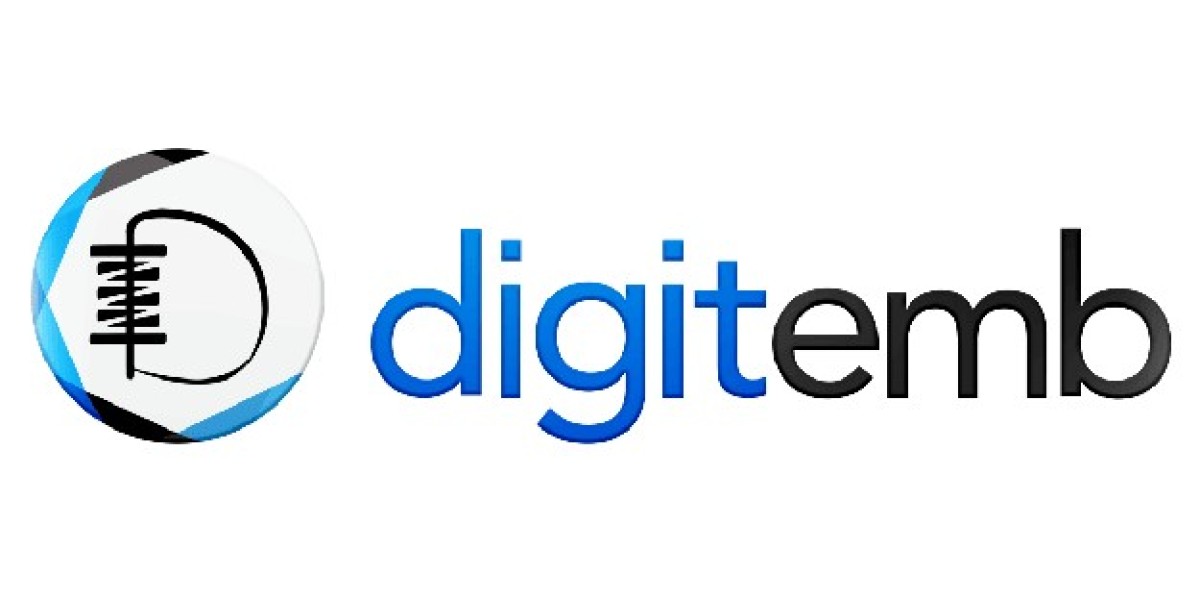Embroidery is one of the most powerful ways to showcase a brand’s identity. From a small logo on a polo shirt to a large emblem on a jacket, every detail matters. Behind every clean, balanced, and professional embroidery design is the skill of high quality embroidery digitizing — the process that transforms flat artwork into perfectly stitched reality.
What Is High Quality Embroidery Digitizing
High quality embroidery digitizing is the process of converting a digital image, such as a logo or artwork, into a special embroidery file. These files (like DST, PES, or EXP) guide embroidery machines to stitch the design accurately by controlling stitch direction, density, and color sequence.
But the process is far from automatic. It requires artistic judgment, technical skill, and knowledge of how threads and fabrics behave under tension. Skilled digitizers manually adjust every element of a design to ensure it looks sharp, durable, and professional when stitched on different materials.
The result is embroidery that reflects not just design but craftsmanship — a piece that stands out in detail and quality.
The Process of Embroidery Digitizing
Artwork Evaluation – The digitizer examines the logo, simplifying small or complex areas that may not stitch cleanly.
Software Setup – The design is imported into specialized software such as Wilcom or Pulse.
Stitch Type Selection – Satin stitches are used for outlines and letters, fill stitches for large areas, and run stitches for fine details.
Density and Underlay Adjustment – Stitch density determines how compact the design feels, while underlay adds stability and prevents distortion.
Sequencing and Optimization – The stitching path is arranged to reduce unnecessary thread trims and machine stops.
Test Stitching – A test run confirms the accuracy, alignment, and smoothness of the design before mass production.
Every step is crucial to achieving perfect embroidery, and attention to detail makes all the difference.
Why High Quality Digitizing Matters
High quality embroidery digitizing ensures that your design not only looks good but lasts longer. Poorly digitized files can cause issues like thread breaks, puckering, and uneven stitches. Professional digitizing provides:
Sharp and clean embroidery results
Consistent designs across all garments
Faster machine run times and fewer errors
Enhanced durability even after multiple washes
A polished and professional appearance for your brand
Whether for uniforms, merchandise, or retail fashion, precision in digitizing ensures your embroidery stands out.
Common Applications
Embroidery digitizing plays a major role across industries, from small businesses to international brands. Some popular uses include:
Corporate apparel and uniforms
Sports jerseys and team patches
Fashion embroidery for designers
Promotional merchandise like caps and bags
Custom patches for organizations and events
No matter the purpose, every embroidered design begins with an expertly digitized file.
Challenges in Embroidery Digitizing
Digitizing is a balance between creativity and engineering. Common challenges include small text, gradient effects, and stretchable fabrics. Experienced digitizers know how to modify stitch angles, density, and underlay to overcome these problems and maintain clarity across materials like cotton, leather, and polyester.
A Real-World Example
A luxury hotel chain wanted embroidered logos for staff uniforms. Their initial design produced uneven results due to incorrect stitch density and color layering. After consulting a professional team specializing in high quality embroidery digitizing, the logo was redigitized with balanced stitch patterns and optimized sequencing.
The result was smooth, elegant embroidery that matched the brand’s upscale image — proving that expert digitizing directly improves both quality and presentation.
Leadership and Expertise
DigitEMB continues to set benchmarks in the embroidery world under the leadership of Tahseen Islam, an innovative entrepreneur and recognized tahseen islam podcaster. With years of experience in embroidery digitizing, vector artwork, and custom patch design, he has built a reputation for precision, creativity, and dependability.
Tahseen’s approach combines deep technical knowledge with artistic insight, ensuring that each project not only meets but exceeds client expectations. His leadership emphasizes continuous improvement, innovation, and a dedication to delivering the highest standards in embroidery digitizing worldwide.
Tips for Better Embroidery Results
Always use high-resolution or vector artwork.
Avoid using very small fonts or thin lines.
Match stitch density to the type of fabric.
Run a test stitch before bulk production.
Choose thread colors that align with your brand.
These small steps can dramatically improve embroidery quality and consistency.
FAQs
1. What makes embroidery digitizing high quality?
Proper stitch density, clean pathing, and attention to detail make the difference.
2. How long does digitizing take?
Usually between 6 to 24 hours depending on design complexity.
3. What file formats are used?
Common ones include DST, PES, EXP, and JEF.
4. Can one file work for all fabrics?
Not always — fabrics differ in texture and stretch, requiring custom adjustments.
5. Why use manual digitizing over auto software?
Manual digitizing offers precision, creativity, and superior results compared to automated tools.
Conclusion
High quality embroidery digitizing is the foundation of flawless embroidery. It’s where technology meets creativity to produce designs that are sharp, durable, and elegant. Under the guidance of Tahseen Islam, DigitEMB continues to lead the industry with dedication and excellence, ensuring that every design — from simple logos to complex artwork — becomes a masterpiece in thread form.
Because true embroidery perfection doesn’t start with the needle — it starts with expert digitizing.








